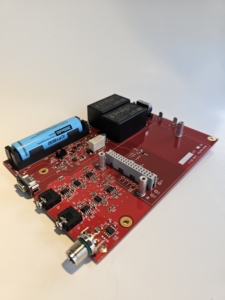Are You Designing Your Product for the Right Environment?
Pollution degrees, as defined by UL 840 (IEC 60664-1) guidelines, help determine the level of environmental contamination or electrical stress that equipment can handle. Pollution degree classification is based on the condensation and dry pollution (such as pollen, dust, and conductive particles) present in an environment. This classification is important because it affects creepage and clearance distances required for product safety. The appropriate degree of pollution that equipment can handle depends on its mechanical design and the voltages it will encounter.
For example, the Print Circuit Board (PCB) shown above is designed to meet Pollution Degree 1. A Pollution Degree 1 environment can be found inside sealed components and within air-tight/water-tight enclosures. If the PCB is placed in an enclosure with a large opening for vents, condensation could short traces and components, and impact performance. Placing the PCB inside a weather-tight enclosure eliminates those concerns.
Here’s a breakdown of the pollution degrees according to UL 840:
Pollution Degree 1: This degree signifies a clean environment with either no pollution or only dry, nonconductive pollution that has no significant effect on the equipment. Equipment designed for Pollution Degree 1 can be used in environments with encapsulation or hermetic sealing, as well as clean room environments.
Pollution Degree 2: In this degree, the environment may have nonconductive pollution, and temporary conductivity may occur due to condensation. Equipment designed for Pollution Degree 2 is suitable for use in environments like offices or laboratories, where nonconductive pollution is expected, but occasional condensation may occur.
Pollution Degree 3: Pollution Degree 3 indicates the presence of conductive pollution or dry, nonconductive pollution that can become conductive due to anticipated condensation. Equipment suitable for Pollution Degree 3 is designed to withstand industrial or farming areas where conductive pollution is present.
Pollution Degree 4: The highest pollution degree, Degree 4, represents pollution that causes persistent conductivity due to conductive dust, rain, or snow. Equipment designed for Pollution Degree 4 is intended for use in environments such as metal working shops.
Keep in mind that these guidelines provide general recommendations, and it’s important to consult the specific standards and requirements applicable to your equipment or industry to ensure proper design and operational safety.
This article was written by Saad Thabit, Principal Engineer at DRF Engineering Services. Saad has more than 25 years of experience in power conversion and testing. His consulting firm specializes in power electronics design.


